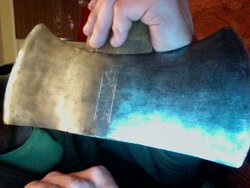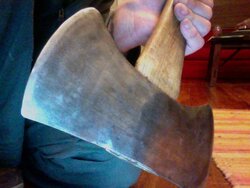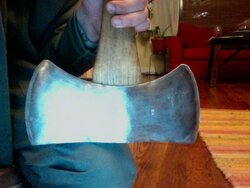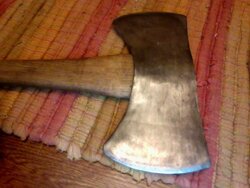Got a nice (I'm told 1950's) double bit Collins Legitimus axe a few years back. Haven't put it to much use but I'm seriously considering trying to refinish it and some other axes/hatchets partly for aesthetics and partly to get them in better working order.
Does anyone have any experience with getting minor rust off and even "bluing" or other refinishing techniques. I ran across this project of a similar Collins axe and was inspired. http://backyardbushman.com/?p=152
Any advice, let's hear it!
Does anyone have any experience with getting minor rust off and even "bluing" or other refinishing techniques. I ran across this project of a similar Collins axe and was inspired. http://backyardbushman.com/?p=152
Any advice, let's hear it!





